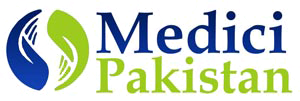Pakistan has an estimated population of over 166 million inhabitants in 2006 and a relatively high growth rate that has, however, been showing signs of slowing down. Dramatic social changes have led to rapid urbanization and the emergence of mega cities that correlates with a global trend sometimes referred to as social globalization . Pakistan has a multicultural society and hosts one of the largest refugee populations in the world as well as a very young population.
Population: 162,400,000 (July 2005 est.) (166 million in 2006 est.)
Growth rate: 2.03% (2005 est.)
Birth rate: 30.42 births/1,000 population (2005 est.)
Death rate: 8.45 deaths/1,000 population (2005 est.)
Net migration rate: -1.67 migrant(s)/1,000 population (2005 est.)
0-14 years: 39.6%(male 33,104,311; female 31,244,297)
15-64 years: 56.3% (male 46,759,333; female 44,685,828)
65 years and over: 4.1% (male 3,189,122; female 3,437,055) (2005 est.)
Infant mortality rate: 72.44 deaths/1,000 live births (2005 est.)
Life expectancy at birth:
total population: 63 years
male: 62.04 years
female: 64.01 years (2005 est.)
Definition: age 15 and over can read and write.
total population: 45.7% (2003 est.)
male: 59.8%
female: 30.6%
The offical language of Paksitan is English, Urdu is the national Language.
English is the officail language which is widely used within the government, by the civil service and the officer ranks of the military. Pakistan’s Constitution and laws are written in English. Many schools, and nearly all colleges and universities, use English as the medium of instruction.
Urdu is the national language. It is widely used, both formally and informally, for personal letters as well as public literature, in the literary sphere and in the popular media. It is a required subject of study in all primary and secondary schools.

